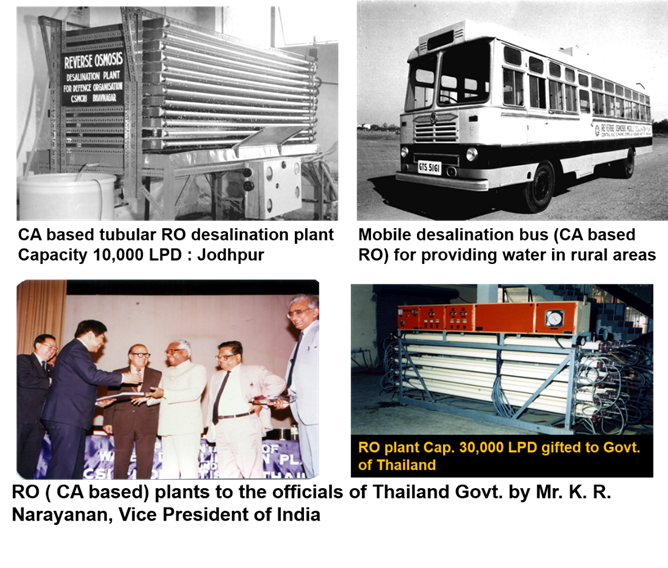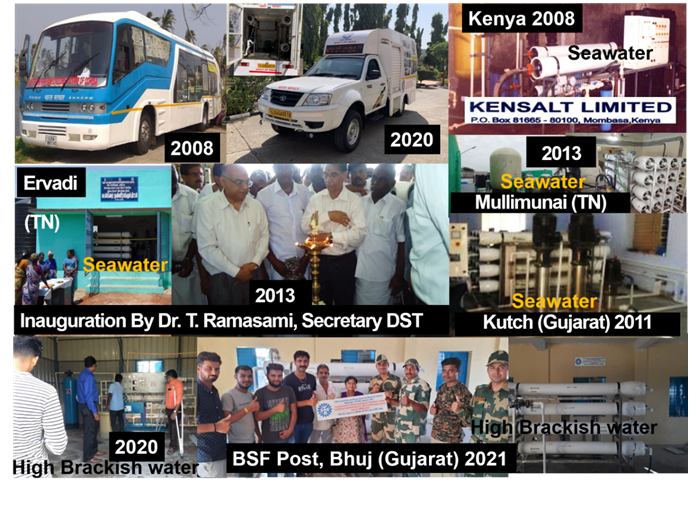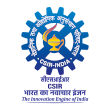झिल्ली विलवणीकरण प्रौद्योगिकी
Water scarcity is a global problem and affects billions of people worldwide. Inadequate water supply, sanitation problem and poor hygiene causes severe health issues among the population and even lead to loss of life. Desalination is a process of removing dissolved salts from saline water, which can increase availability of potable water by converting seawater/ brackish water into potable water.
At CSIR-Central Salt and Marine Chemicals Research Institute (CSMCRI), membrane research program was initiated in the year 1969 with an aim to develop technology to meet the demand for clean water through desalination. In the initial period during 1970-1985, RO membranes for brackish water desalination were developed. Cellulose Acetate (CA) membranes are the first generation commercial RO desalination membranes. CA membrane is a semi-permeable membrane that allows the water containing low amount of dissolved salt to permeate through but retains water containing high amount of dissolved salt under external pressure in excess of the osmotic pressure of the saline water solution. In this way, it is the ‘reverse osmosis’ process of forcing potable water from brackish or seawater through the membrane by applying a pressure in excess of the osmotic pressure. This is reverse to the natural process of osmosis in which solvent from dilute solution moves towards the concentrated solution across the membrane.
Using the indigenous CA-based RO membranes, several plants (400-2000 Litres/h capacity) were set up for brackish water desalination in various part of the country during 1980-1990. Govt. of India presented two RO plants (CA membrane based) to Govt. of Thailand in 1989 and the technology was licensed to BHEL, Hyderabad and Arrow Technology Pvt Ltd, Ahmedabad.
Some of the limitations associated with CA membranes were fouling due to biological attack, narrow pH range of tolerance and low flux. In order to overcome these limitations, CSIR-CSMCRI developed another reverse osmosis membrane known as thin-film-composite membrane. The thin-film-composite membrane comprised of three layers, the top selective layer of dense polyamide, middle sub-layer support of porous polymer and bottom non-woven fabric. This membrane is the second-generation RO membranes. It has several advantages for desalination and other separation applications in views of longer membrane life, mechanically more robust and high strength for operation at high pressure, high selectivity in terms of salt rejection efficiency and high productivity in terms of potable permeate water, resistance in wide pH range of operation etc.
The preparation of the thin-film-composite membrane consists of two steps. In the first step, polymer support membrane (PSM) is prepared by a phase inversion process, and in the second step, thin-film-composite membrane is prepared by deposition of a dense polyamide layer over the polymer support membrane (PSM) using a coating process.
CSIR-CSMCRI developed a large-scale facility (200 m2 per batch) for the production of such membranes and licenced the technology for commercial production of TFC membranes and modules to M/s Uniqflux Membranes LLP, Pune and Rinzai Hydratech, Ahmedabad and OM Tech Rajkot. The institute has installed several brackish water desalination plants across the country and abroad (Kenya, Afghanistan). A better membrane separation technology that allows the usage of less material, low energy consumption and permit recovery & reuse of process streams is certainly desirable. It can be low-pressure desalination of seawater at high recovery using combinatorial approaches of advanced material preparation and integrated systems.
Dr. Puyam Sobhindro Singh
Senior Principal Scientist, CSIR-CSMCRI



 पेंशनर्स कॉर्नर
पेंशनर्स कॉर्नर स्क्रीन रीडर एक्सेस
स्क्रीन रीडर एक्सेस मुख्य सामग्री पर जाएं
मुख्य सामग्री पर जाएं






















